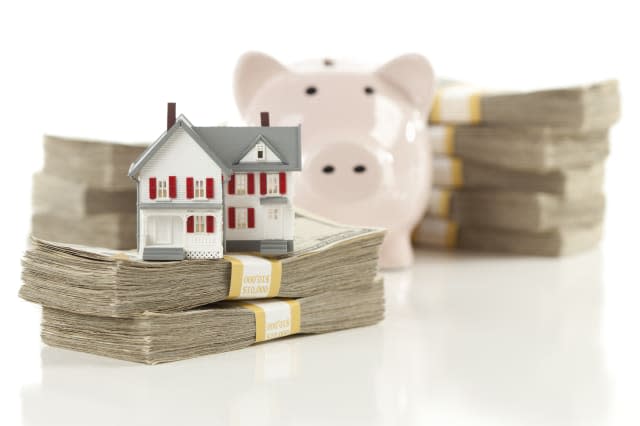Buying a Home: Clearing the Down Payment Hurdle

For many, the down payment is the toughest obstacle to get past when buying a home. However, there are many programs available for buyers with a small (or even no) down payment. The key is finding the
right plan and being a solid applicant with decent credit and stable, verifiable income.
Community Homebuyer Program: 5 Percent Down -- These loans are designed for buyers with low-to-moderate incomes. First-time purchasers must complete a homebuyer education class. Applicants must meet underwriting guidelines, but the program may not be available in all states. In addition, mortgage insurance is much less expensive.
• The applicant's annual income must be equal to or less than the area median income. Freddie Mac's Lookup Tool indicates what your income should be.
• Income eligibility requirements may be different in high cost areas.
• An exception to the income requirements applies when for-sale properties are located in designated "non-metro" or "underserved" areas.
[You Could Save Money on your Mortgage – Compare rates with LendingTree.com!]
FHA: 3.5 Percent Down -- FHA mortgages were designed to increase home ownership. The program imposes no income limitation and is not restricted to first-time buyers, but there are maximum loan sizes that depend on the property location. FHA's "official" underwriting guidelines allow credit scores as low as 580 for loans with 3.5 percent down, but many lenders impose higher minimums. FHA requires an upfront premium of 1.75 percent of the loan amount, plus annual premiums (divided by 12 and added to the mortgage payment) of 1.35 percent of the loan balance for most borrowers with 30-year loans.
Unlike conventional (non-government-insured) loans, FHA requires payment of mortgage insurance for the life of the loan.
USDA: Zero Down -- The Department of Agriculture's Rural Housing program allows 100 percent financing of eligible property. Homebuyers should not necessarily be deterred by the term "rural." About half the population in the United States lives on property considered "rural" by the Department of Agriculture. USDA loans come in two varieties -- guaranteed loans, which are funded by private lenders and backed by the government, and direct loans, in which the government provides the funding. The direct program is for people with lower incomes and may also provide a subsidized interest rate and a term of up to 38 years. The guaranteed program has more relaxed income restrictions – and provides loan terms for up to 33.
[LendingTree Lenders Beat the National Average on Rates – Could you Save?]
VA: Zero Down -- Veterans, service members and dependents may be eligible for a great benefit -- home loans with zero down. The VA charges an upfront funding fee, which varies with the borrower's status and/or disability rating (guard, reserve, active duty, etc.), amount of down payment and whether the benefit has been used before or not.The VA itself does not limit the loan size, but most lenders allow 100 percent loans of up to $417,000. VA mortgage lenders can help applicants get their Certificates of Eligibility from the government.
Down Payment Assistance: Varies -- Down payment assistance can take the form of a low interest second mortgage, a no interest second mortgage, or a grant. It may be offered by federal, state or local governments, charities, employers or civic organizations. Those interested should check with HUD's state pages, which contain lists of housing organizations and programs.
Good Neighbor Next Door -- This program allows first responders, teachers and nurses to purchase HUD homes (FHA-insured foreclosure properties) in designated areas. The houses are listed on HUD's Web site and sold through licensed real estate agents. Buyers receive the down-payment break by committing to living in the property for at least three years or they have to pay the full price of the home.
Other options include getting the seller to carry a second mortgage, or taking on a lease to purchase option. An experienced real estate agent can help with this. With a little effort, qualified homebuyers need not let the absence of a down payment or having less than the standard 20% down, stop them from buying houses and obtaining mortgage financing.

